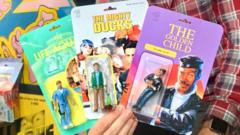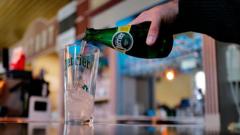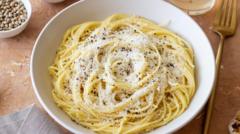This article dives into the rising concerns from artists over AI's encroachment on creative domains and its implications on artistic livelihoods.
AI Artisans vs. Human Creativity: The Battle for Artistic Integrity

AI Artisans vs. Human Creativity: The Battle for Artistic Integrity
A clash emerges as traditional artists express frustration toward AI-generated doll imagery.
As artificial intelligence (AI) continues to evolve, a growing trend of generating "starter pack" images of people as dolls has irked many traditional artists who fear for their livelihoods. Since April, thousands have submitted personal photos to create doll versions of themselves, unknowingly compromising their artistic integrity and privacy in the process.
Nick Lavellee, a custom action figure creator with a six-year history, has voiced his worries about how the influx of AI-generated images is flooding social media and diminishing the unique aesthetic of handcrafted art. "People are sick of them," he commented. Nick has enjoyed success from his craft, producing figures of renowned artists and musicians and selling them on his Wicked Joyful platform. However, with the rise of AI images, he fears that commissions might dwindle as consumer perception shifts.
This frustration is echoed in the #StarterPackNoAI movement, which emerged on Instagram to advocate for traditional artistry. Artist Maria Picassó Piquer shared her experience chronicling the differences between AI-generated work and human-created pieces, emphasizing how the latter reflects deeper emotions and personal character. She also raised concerns about the potential infringement of intellectual property rights due to AI algorithms sourcing from "stolen" artwork.
Others, like Dav le Dessineux, an illustrator from Bordeaux, France, have felt the impact firsthand as some contracts have shifted to AI design options. He expressed his fatigue over the overabundance of AI doll imagery and championed the value of artists using traditional tools. This sentiment was echoed by Eli Dibitonto, an artist from Barletta, Italy, who described the joy found in illustrating his own unique work.
Evie Joyce, a student and illustrator, stressed the personal investment inherent in creating art, noting that AI lacks the raw human touch that imbues personality into artwork. As a counterpoint to the AI wave, Nick acknowledges that AI can serve as a tool but insists on the merit of genuine creativity. He hopes that artists will continue to be appreciated for their authentic creations.
Experts like AI researcher Henk van Ess caution against the trivialization of AI's capabilities in producing low-value projects, suggesting it diverts attention from more revolutionary applications of technology. Nick, however, remains hopeful, stating that the joy his creations bring can distinguish them from generated content, affirming the enduring value of artisanal craftsmanship.
Even as the debate rages on, both Nick and Dav share aspirations of remaining relevant artisans in a world increasingly dominated by artificial creations, eager for consumers to see the unique value in hand-crafted art.




















